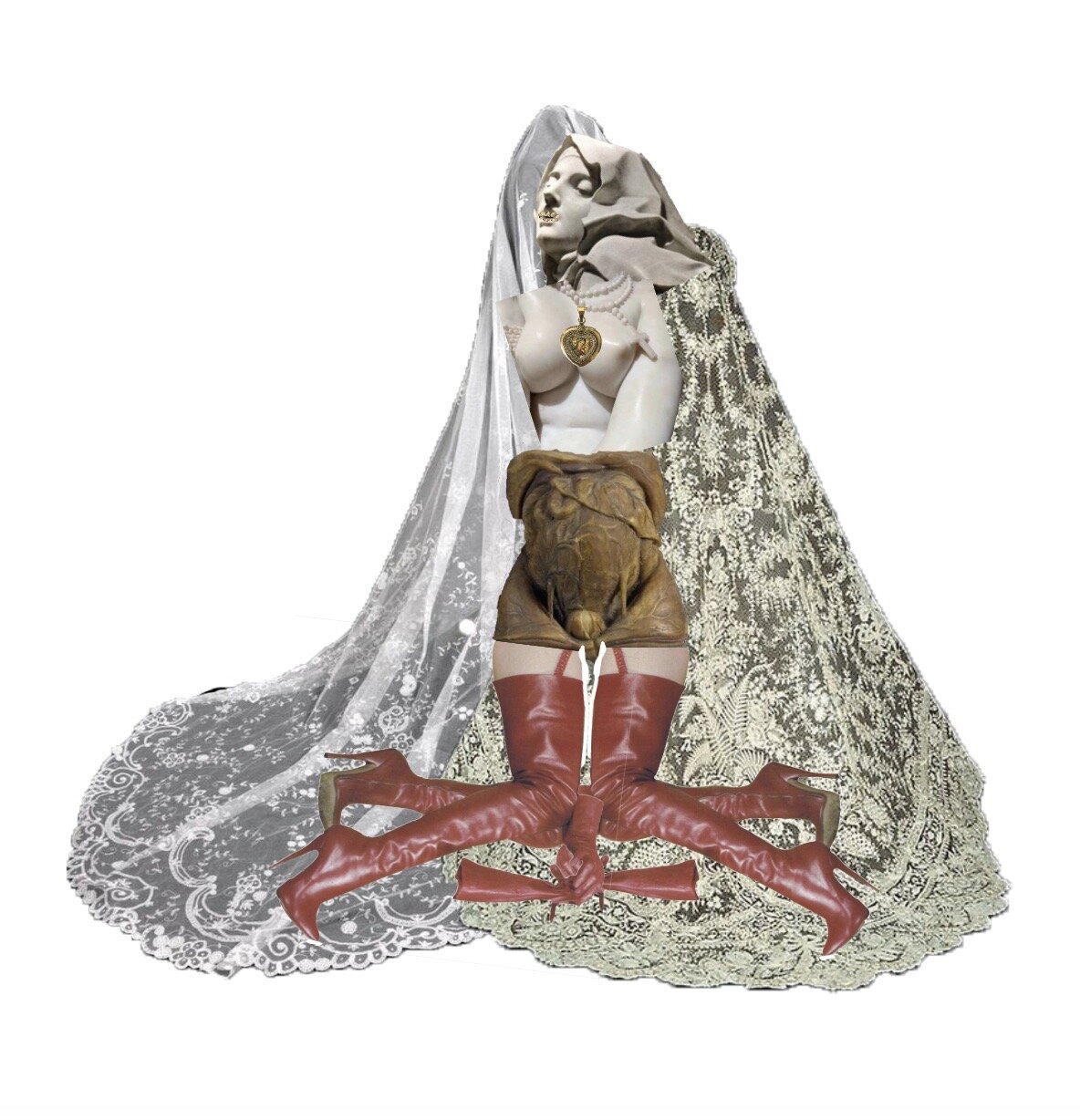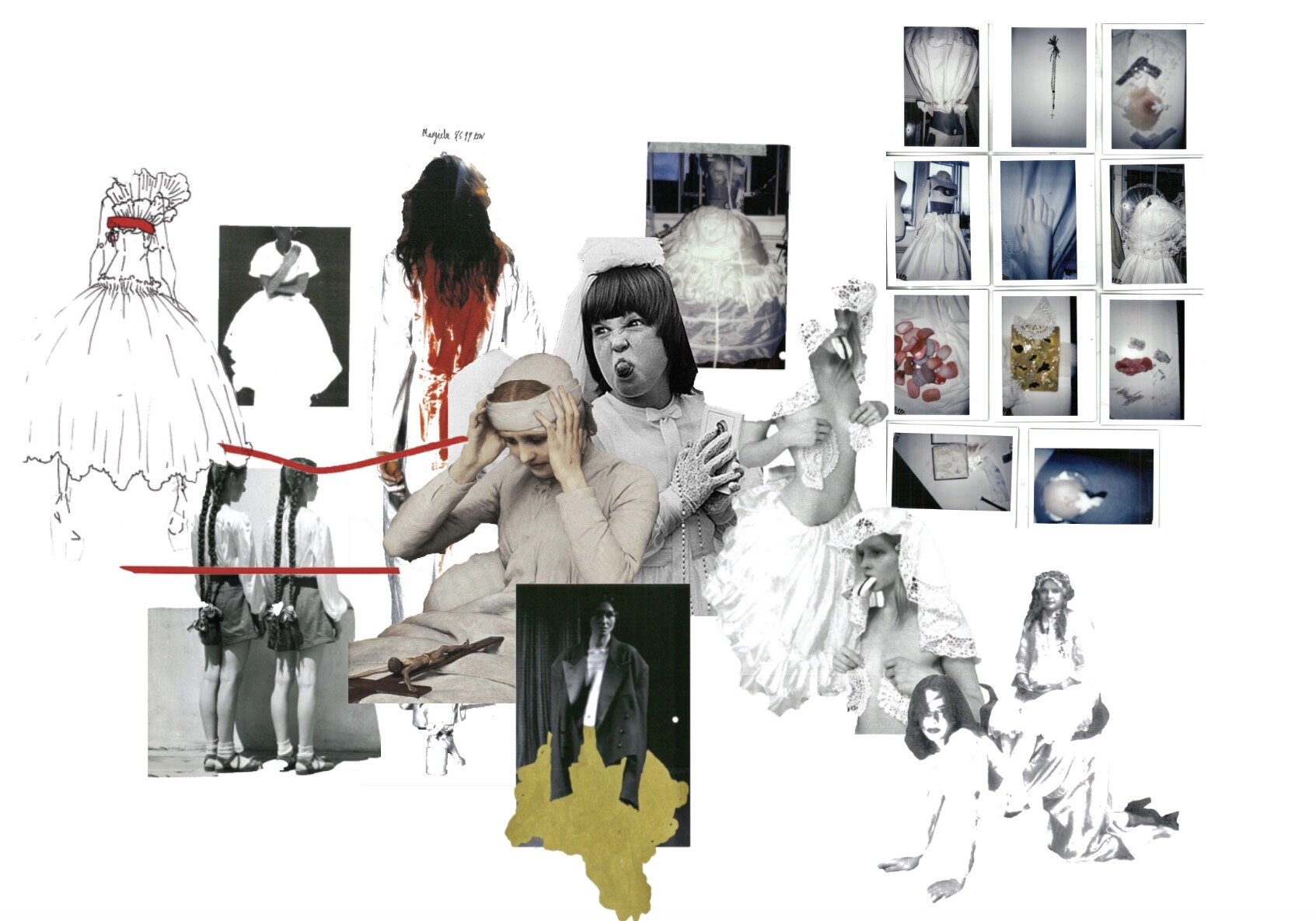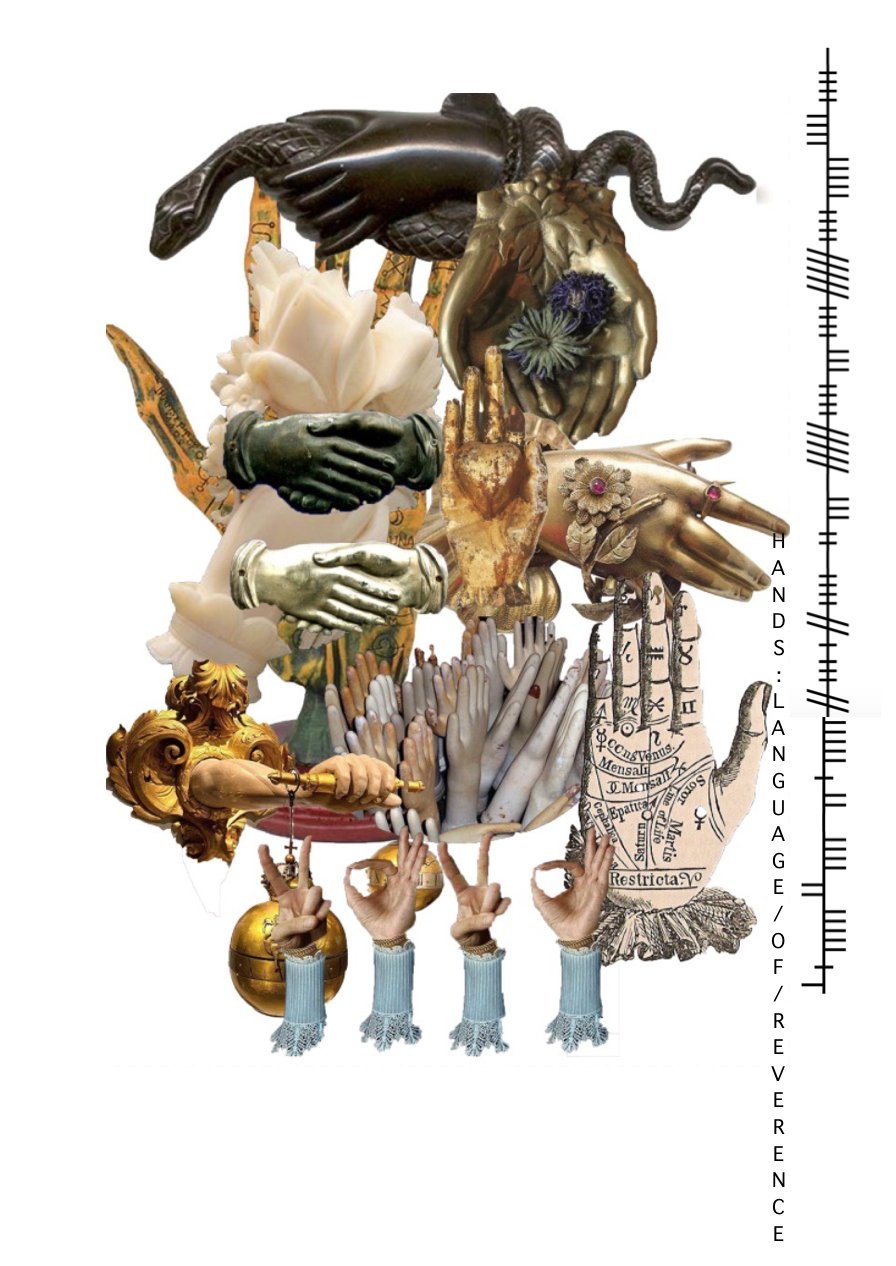Aoibhe Maguire
Meet Aoibhe Maguire, a BA graduate of Fashion at Kingston University. This GFF Talent shares with us the ways that biblical imagery taught during childhood in Ireland inspired her final year project.
Sustainable design thinking has filtered through every step of Aoibhe’s process, from her choice and sourcing of materials to the handcraft experts she has worked with to create her collection. Read on to learn more about Aoibhe’s plans for the future.
1. What was the starting point of inspiration for your final project?
I grew up in a dual-Christian household, and this experience has very much shaped the work I do today. The stark visual experience of faith and the biblical preoccupation with the body as a vehicle of teaching; combined with childhood literal interpretation of unclean hands, teeth, breasts-milk and honey, flailing tongues, blood as sacred, flesh as consumable, is a macabre interpretation of faith and equates to unattainable levels of purity and revulsion at the ‘unholy’ body.
2. What form will it take?
Originally my final collection was to consist of 6-8 looks including ballgown dresses, crochet trousers, crochet crops, linen skirts with petticoats, Donegal wool underwear, silicone breast piece’s embedded with various Irish heathers and gold pigment. A shoot along the west coast of Ireland for an editorial look book was organised but as a result of the COVID-19 crisis, I’m looking into digital means of presentation including an interactive website gallery of my work.
3. How has it evolved from your initial ideas and what have you learnt along the way?
I’ve learnt that collaboration with various artists, especially female Irish artists, has added a depth and collectiveness to my work. It’s helped me to ground my ideas and to share the excitement of a new project. I’ve had the privilege to be involved with Irish crocheters Elaine Honey and Maureen Christopher, natural fabric dyer Kathryn Davey and prosthetic artist Sadhbh Nic Uidhir. Contact with them has almost kept me in contact with home and keeps me planted in why I make what I do. It’s given me a bridge back to Dublin while I’ve been in London and helped me to focus on my story.
4. What is the message behind your project that you want people to take away?
People, place and story are inherently conjugated together and exist interminably. My generation in Ireland are the first to separate ourselves from the Catholic Church, our childhoods were filled with extensive revelations of abuse and I feel this has also made us repudiate faith. I believe that we are on the road to forging a new image of faith, purity and reverence. That the image of the be ‘beheld’ is ours to define. We represent a grasp at juvenescence, an out-held hand.
5. What’s an aspect of the fashion industry that you’re passionate about fixing or having a positive impact on?
Sustainable practices are an act of environmental and heritage consciousness. The fashion industry is one of the biggest contributors to the climate crisis and in all respects needs to slow down, not just in terms of production but of pace; it is an unsustainable practice and not one I feel will be taking with us into the industry.
I’ve collected my linens in the form of bedspreads, tablecloths and pillowcases from charity shops swell as eBay to form my collection. Natural, unbleached Donegal wool is used throughout. Though this is a small contribution, hopefully as graduates enter the workforce, we can influence decisions made at an industry level. Its something we all have to commit to if we want to see a wide-scale change within the industry.
5. What is your plan once you finish your BA?
Like many 2020 graduates, our future is unsure at the moment with the current pandemic crisis. I originally had plans to get experience within many different disciplines in the fashion industry throughout Europe and the States from designers I greatly admire, but for now, those plans are on hold while we are on lockdown in our home countries.
This crisis may force us to change the way we operate as an industry in term of both production and employment. For now, I am trying to complete my degree to the best standard I can, expand and improve my portfolio and look into digital means of collaboration with other artists during this difficult time.








